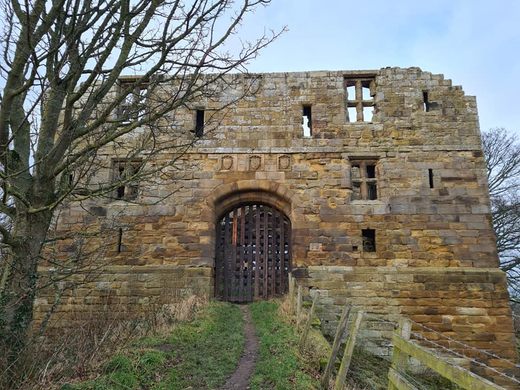Whorlton, mentioned in the Doomsday Book, originally belonged to Robert, Count of Mortain, half-brother to William the Conqueror. It later passed to the Meynell family, who built the first castle on the site.


In the 12th century, they constructed an earth and timber moat and bailey castle on a small hill with commanding views over the Tees Valley and an important road along the western edge of the North Yorkshire Moors. This strategic location made it ideal for overseeing Saxon territories.

Remarkably, the moat and bailey castle continued to be used throughout the Middle Ages and early modern period. By 1343, it had become a ruin, prompting Lord Darcy of Knayth to rebuild it, adding significant features like the tower house and gatehouse, which survive today. The Darcy family retained ownership until 1418, when the castle passed to Philip Darcy’s daughter, who married Sir James Strangeways.


Following a 1541 dispute between Strangeways’ heirs and the Dacres of Greystock, the castle became Crown property. King Henry VIII granted the estate to the 4th Earl of Lennox, linking it to Mary Queen of Scots. Legend suggests that from Whorlton Castle, the Countess of Lennox offered her son, Lord Darnley, as a suitor to Mary, though the marriage contract was signed at Stirling Castle.

The castle later returned to the Crown and fell into ruin. In the early 17th century, a house was built on the grounds and used for over 100 years until the Bruce family, the subsequent owners, stripped it for building materials.

Today, the gatehouse is Grade 1 listed, and the 12th-century storerooms and cellars are privately owned by the 1st Viscount Ingleby, who acquired them in the mid-20th century as part of his shooting estate.

Know Before You Go: A small pull-in area in front of the castle gatehouse can accommodate one car.

